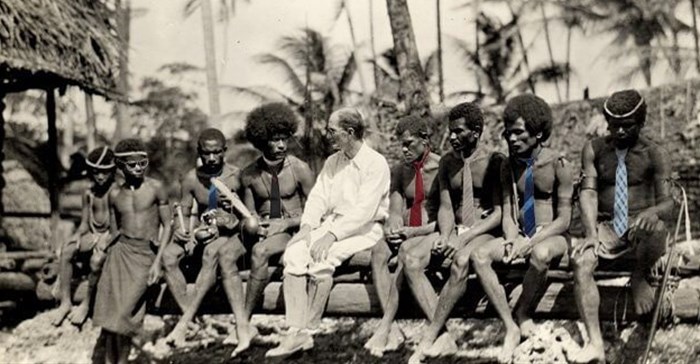
Top stories






More news












The learnings I want to share will be useful in understanding the work of an anthropologist and the five important stages that help us deliver great value to clients’ businesses.
Working as an anthropologist within a B2B marketing agency, my team and I are usually approached by clients to develop a strategy for client retention or acquisition. The strategy is developed along with a research proposal – which informs the strategy.
Unlike in quantitative research where there is hypothesis testing, the work of anthropologists in the B2B space involves qualitative exploratory research, also known as ‘small data’. It aims to discover human insights, their meaning and how they inform business decisions.
Where quantitative data seeks to know what people do, small data informs how and why they do it.
What’s critical to understand is that the sample sizes aren’t large compared to the big data research that’s required in the B2C space. They are also not too small to avoid being biased – which can limit the research.
It’s very important to also note that projects come with different complexity levels. Usually, complex projects take between four to six weeks of fieldwork and sense-making.
During the proposal phase, clients need to understand the purpose of the research and approve it on time to ensure that all timelines for research and strategy align.
Pre-fieldwork is the process of making sure everything is in order; from identifying stakeholders that will have to be interviewed to knowing locations to be travelled for interviews and more.
Clients play an active role during this phase because they need to provide contact information of either past, current or future customers that would need to be interviewed and notify them of this research in advance.
My team and I have found that C-suite executives and other decision-makers in companies either don’t have time to spare for interviews or they are generally uncomfortable with them – especially when required to share information about their business.
In this case, it helps when clients make these executives aware of who the anthropology team is to allow anthropologists the opportunity to establish a good rapport with the relevant executives when they make contact.
Proper planning is important because much of the job involves travelling to conduct interviews and spending time outside the office.
Ethnography is one of the research approaches used to get insights.
In-depth interviews, which are guided but encourage open-ended conversations, are used. Infield work, which involves shadowing participants as they go about their daily life, is also done.
Along the way, questions are asked to understand the actions and the meanings behind them.
Unlike interviews in the B2C space, the B2B environment is a little more difficult. B2C interview participants usually willingly share their personal information. However, in the B2B world, participants can sometimes be guarded as sharing sensitive business information can cost them their jobs.
To get around this, an anthropologist’s role involves having empathy, being genuine and honest about the research that is being done up front. This goes a long way in establishing trust.
It also helps in opening doors because anthropologists speak to different stakeholders within one company to get an unbiased understanding of how the company operates, it’s culture and what informs decision-making.
Anthropology is all about understanding what makes us human and what influences our actions. Our observations are only as good as the actionable insights that come out of them.
Insight mapping or sense-making is an exciting part of anthropology. In this context, it involves understanding detailed descriptions of individuals who run businesses and the decisions they make for the better running of their businesses.
This stage brings out common themes of how things work. To understand this, anthropologists get to the core of all the observations they’ve gathered, and everything comes down to what people or organisations desire to achieve.
In his book Small Data, Martin Lindstrom said: “Small data now and forever lies the greatest evidence of who we are and what we desire.” Desire is a strong feeling of wanting to have something or wishing for something to happen.
Emotions drive decision-making – science has shown this. Brands that seek an emotional connection with their customers are more valuable than those that focus on 'rational' reasoning.
In the B2B world, emotions also influence decision-making. Through anthropology, time is spent with decision-makers to understand how their businesses work and what they want to achieve for their businesses.
Marketing is a combination of anthropology, psychology, and sociology. Marketing is not about algorithms and automations, but all things human. @markwschaefer #ContentJam
— Juliana Michelotti (@JulieMichelotti) October 29, 2019
When creating the final ethnographic document, the participants’ stories are told and their views are shared. It also identifies how their experiences shape their discussions and decisions about their business, products or services.
Anthropologists leverage these observations and human insights to unlock differentiating results for clients such as:
5. Presenting findings
Presenting great feedback is easy and anyone can do that but doing research does not always guarantee favourable findings to the client. What happens when anthropologists must be the bearers of bad news?
Sam Ladner, the senior user researcher at Microsoft, said in her book, Practical Ethnography: A Guide to Doing Ethnography in the Private Sector: "Asking what consumers truly believe about a company's product is a bold act because it begs a self-examination of what the company believes about that same product."
Before the research starts, the current climate of the company must be established. Presenting bad news when a company is going through a rough patch can cause panic and resistance to accept reality within the organisation – which defeats the actual purpose for the research.
If that is the case, the ‘findings of doom’ must emphasise actionable insights that are true to the organisation’s current climate, to help inform their marketing strategy moving forward.
Again, personality plays a major role in research and findings. In much the same way participants are profiled when doing ethnography for archetypes, the same applies in this context.
It is imperative that anthropologists understand who the client is as a person, what’s important to them as a decision-maker in that organisation and how they intend to use the research.
When conducted in the right way with the right partner, anthropology allows businesses to leverage on human-driven strategies that give them a competitive edge through highly experienced research, strategy and creative teams.
